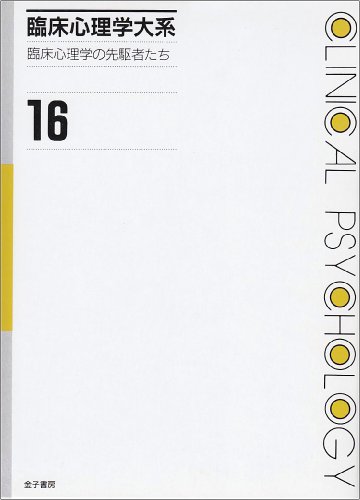2 0 0 0 OA いわゆる対人恐怖症者における「悩み」の構造に関する研究
- 著者
- 小川 捷之
- 出版者
- 横浜国立大学
- 雑誌
- 横浜国立大学教育紀要 (ISSN:05135656)
- 巻号頁・発行日
- vol.14, pp.1-33, 1974-10-05
In Japan a neurosis called anthropophobia is common, and is thought to spring from Japanese culture (especially from the Japanese mode of interpersonal relationships). Symptoms of this neurosis are of a wide variety, such as fear of blushing, of exchanging glances, of being regarded as disagreeable, and of being exposed to the public eye. But in spite of these symptomatic differences, there seems to be a common self-consciousness among anthropophobics. In a therapeutic situation, they always complain about feelings of inadequacy. The purpose of this study was to investigate these characteristics of self-awareness from the psychological point of view. 1. The worries that are thought to be had by these neurotics were collected and arranged into 445 items. 100 college students and 50 anthropophobics were asked to make a self-evaluation on these 445 items, each accompanied by a 7 degree rating scale. Statistically significant differences were found in 341 of the 445 items (p<.01). According to this fact, it can be considered that anthropophobics are inclined to regard themselves as being "ill". To them, inferiority in one aspect results in considering themselves as being inferior to others in all possible ways. In other words, anthropophobics have a strong negative self-awareness. 2. Furthermore, after statistical consideration, 117 items were selected from the 341 items, and were used in the self-evaluation of 120 anthropophobics. As a result of the factor analysis concerning these 117 items, 8 factors were extracted. Factor I. Worry of the inability to blend into the group. Factor II. Personal dissatisfaction with oneself, and with one's mental function. Factor III. Awareness of others, resulting from worry of being regarded as disagreeable. Factor IV. Worry about the inability to feel "at home" in the presence of others. Factor V. Self-consciousness in the presence of others. Factor VI. Constant sense of feeling "low" and not "right". Factor VII. Worry of being overwhelmed by a crowd of people. Factor VIII. Worry of being regarded as an odd person. (In this factor, there were only a few items showing high factor loadings.)
- 著者
- 関根 剛 小川 捷之
- 出版者
- 横浜国立大学
- 雑誌
- 横浜国立大学教育紀要 (ISSN:05135656)
- 巻号頁・発行日
- vol.25, pp.127-139, 1985-10-30
The purpose of this study is to discuss archetypal dreams and their relations to the dreamers personalities. A questionaire consisting of questions related to the frequency of dream recall and one's interest in dreams and a section for describing freely one's vividest dreams was given to 156 female university students. At the same time MBTI (Myers-Briggs Type Indicator) for Jung's typology was also given to them. To determine whether or not it was archetypal, each dream was rated on the basis of the four criteria of the Archetypal Dream Scale composed by Kluger (1975). The following 4 points were discussed: (1) The frequency of occurence of control dreams and vivid dreams; Kluger's study was followed in part. (2) The relation between collected archetypal dreams and the functions of personalities in Jung's theory. (3) The relation between the frequency of dream recall and functions of personalities or occurence of archetypal dreams. (4) The relation between the subjects' interest in dreams and functions of personalities or occurence of archetypal dreams. The results were as follows: (1) Vivid dreams were significantly (p<.001) more archetypal than control dreams. (2) The occurence of archetypal dreams had a close relation to Perceiving (Irrational function), especially Intuition in it. Those who had archetypal dreams were superior in their Perceiving and Intuition to those who did not have any archetypal dreams. (3) The frequency of dream recall had a certain relation to Judging (Rational function) and no relations to the occurence of archetypal dreams. Those who had a high frequency of dream recall were superior in Thinking to those who had a low frequency. (4) There were no relations between the degree of the interest in dreams and the function of personalities or the occurence of archetypal dreams.
1 0 0 0 成熟と喪失
- 著者
- 小此木啓吾 小川捷之編集
- 出版者
- 至文堂
- 巻号頁・発行日
- 1980
1 0 0 0 統合と拡散
- 著者
- 小此木啓吾 小川捷之編集
- 出版者
- 至文堂
- 巻号頁・発行日
- 1980
1 0 0 0 自律と依存
- 著者
- 小此木啓吾 小川捷之編集
- 出版者
- 至文堂
- 巻号頁・発行日
- 1980
1 0 0 0 臨床心理学の先駆者たち
- 著者
- 小川捷之 福島章 村瀬孝雄編集
- 出版者
- 金子書房
- 巻号頁・発行日
- 1990
1 0 0 0 OA 対人関係における依存と性役割
- 著者
- 福田 周 小川 捷之
- 出版者
- 横浜国立大学
- 雑誌
- 横浜国立大学教育紀要 (ISSN:05135656)
- 巻号頁・発行日
- vol.28, pp.21-39, 1988-10-31
The purpose of this study is to discuss the dependency and sex role in interpersonal relationships in female adolescents. Two questionnaires were administered to 123 female university students and 60 female technical college students. The first questionnaire asked Ss how dependent they were in what mode on 5 objects (father, mother, the most intimate friend of the same sex, the most intimate friend of the opposite sex, i.e., love object, the most intimate brother or sister). The second was a MHF scale composed by Ito (1978) asking Ss the view of sex role they had. The following 2 points were discussed:(1) The generally dependency structure on objects close to female adolescent.(2) The relation between the dependences and the view of sex role. The main results were as follows: There were differences in quality with objects in dependency structure.(2) Female adolescents depended on their fathers on the instrumental side.(3) Female adolescents depended on their mathers on the emotional side.(4) Dependency structure in them had each differents with every view of sex role.

